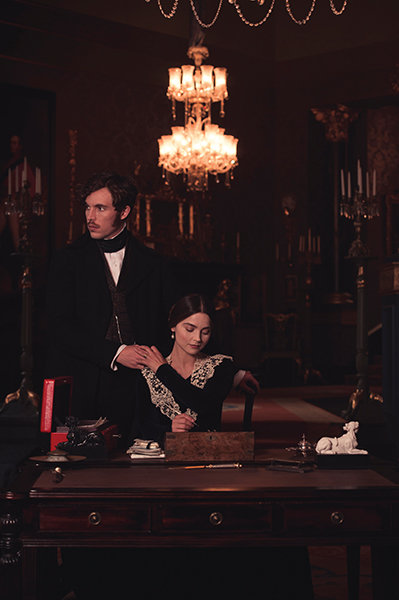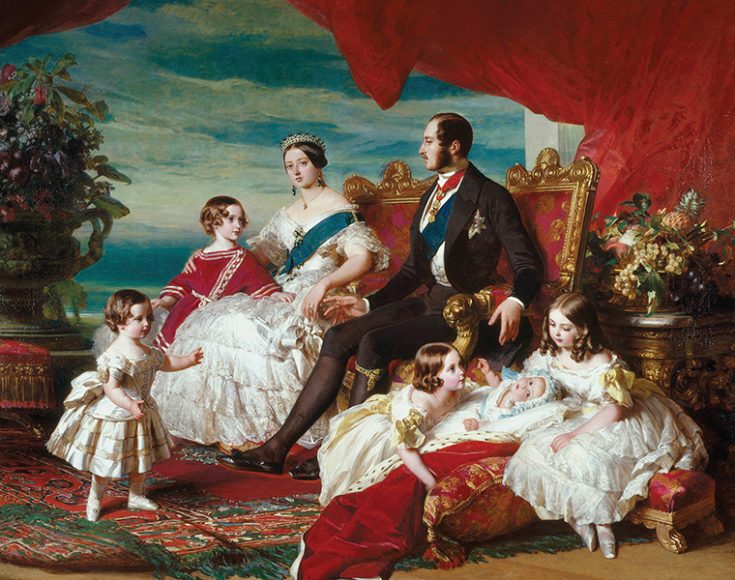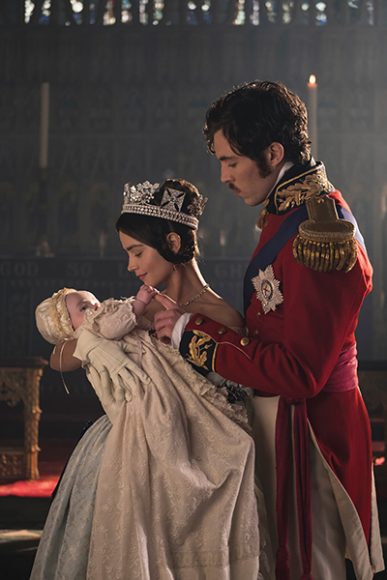The woman who gave her name to an age of probity and prudery even — think piano legs sporting a kind of pantaloons — was herself not particularly Victorian.
At least not when it came to men. Queen Victoria — the subject of the addictive-as-chocolate-covered-potato chips “Victoria” airing on PBS’ “Masterpiece” — was a woman who enjoyed the pleasures of matrimony with her beloved prince consort, Albert, even as she struggled to balance her role as devoted wife and mother with her destiny as queen. But before her marriage — and even after it when Albert’s death plunged her into an intense, prolonged period of secluded mourning — she had an eye for the aesthetic appeal of the male of the species and the power as queen to indulge it.
The woman who would be queen was an unlikely contender. Princess Alexandrina Victoria — she would drop her disliked first name on her ascension to the throne — was born on May 24, 1819 at London’s Kensington Palace to Prince Edward, Duke of Kent and Strathearn, the fourth son of King George III, who is better known on this side of the Pond for losing the American Revolution. Edward’s older brothers had either no children or no surviving heirs. Edward himself died when Victoria was less than a year old and she was raised in a straitjacketed, emotionally abusive environment shaped by her controlling mother, Princess Victoria of Saxe-Coburg-Saalfeld, and the princess’ domineering comptroller (and possible lover) Sir John Conroy.

But from a tender age, Victoria displayed a steely determination and a certain sensuousness — later captured in Franz Xaver Winterhalter’s romantic portrait of the young queen with tresses tumbling down bare shoulders — that suggested an inborn self-possession. On the day that the Archbishop of Canterbury and Lord Conyngham informed her that her uncle, William IV, had died and she was now queen, the 18-year-old wrote, “I got out of bed and went into my sitting-room (only in my dressing gown) and alone and saw them.”
Holding her mother and, especially, Conroy at arm’s length, the new queen relied on the prime minister — William Lamb, the second Viscount Melbourne — for guidance, and they developed a father-daughter, mentor-pupil relationship underscored in the PBS series by the chemistry between Jenna Coleman’s Victoria and Rufus Sewell’s “Lord M.” (Coleman has spoken admiringly of what she calls Sewell’s “goofy” charisma.)
The relationship between Victoria and Melbourne — whose wife, Lady Caroline, had had an affair with Lord Byron — was a little too close for some, particularly after Victoria forced one of her mother’s ladies-in-waiting, Lady Flora, to submit to a gynecological exam on the suspicion that she was pregnant by the detested Conroy. Lady Flora was found to be suffering from liver cancer — hence her distended belly — and her subsequent death led Victoria’s critics to sneer at her as “Mrs. Melbourne.”
Lord Melbourne’s steadying influence diminished with the arrival of a suitor in the form of her cousin Prince Albert of Saxe-Coburg and Gotha (played by Tom Hughes in the series). There were other suitors, including Prince Alexander of the Netherlands. But Albert’s dreamy looks won the day:
“(Albert) is extremely handsome,” she told her diary. “His hair is about the same colour as mine; his eyes are large and blue, and he has a beautiful nose and a very sweet mouth with fine teeth; but the charm of his countenance is his expression, which is most delightful.” This in contrast to the “very plain” Alexander.
The marriage — which took place in February of 1840 in the Chapel Royal of St. James’ Palace in London — was based on more than mere superficialities, however. Albert proved to be devoted to her and England — improving the efficiency of the royal household, instituting reforms and taking over many of the royal responsibilities as Victoria was increasingly occupied with having their nine children. It was not a smooth division of labor, no pun intended, or transition. According to an article in last September’s issue of BBC History Magazine, Victoria was torn between being a traditional wife and mother and her queenly birthright. (Perhaps not so coincidentally, this is a theme of Netflix’s “The Crown,” the story of her great-great-granddaughter, Queen Elizabeth II, who succeeded her as the U.K.’s longest reigning sovereign.)
One place in which Victoria and Albert seemed to be in perfect sync was the bedroom. You have to wonder if the queen’s diary blushed after she confided this to it post-wedding night:
“I NEVER, NEVER spent such an evening!!! MY DEAREST DEAR Albert … his excessive love & affection gave me feelings of heavenly love & happiness I never could have hoped to have felt before! He clasped me in his arms, & we kissed each other again & again! His beauty, his sweetness & gentleness — really how can I ever be thankful enough to have such a Husband! … to be called by names of tenderness, I have never yet heard used to me before — was bliss beyond belief! Oh! This was the happiest day of my life.”
We have to imagine then that Dec. 14, 1861, when Prince Albert died of typhoid — or, some now think, Crohn’s disease or stomach cancer — was the saddest. For a number of years, Victoria withdrew from public life, but she was brought back into that arena by two men — the wily Benjamin Disraeli, who would become her favorite prime minister, and Scottish manservant John Brown, whose relationship with the queen — featured in her book “Leaves From the Journal of Our Life in the Highlands” — would become the subject of much speculation (and the 1997 film “Mrs. Brown,” starring Judi Dench and Billy Connolly).
In 1887, an Indian Muslim clerk, Abdul Karim, would claim the place that Brown, who died four years earlier, had once held in her life and affection — serving as Munshi, Persian for secretary, teaching Victoria Urdu or Hindustani and remaining in her employ until her death when he returned to India with a pension. (Their story was the subject of a 2017 movie, “Victoria & Abdul,” with Dench reprising her role as queen and Ali Fazal as Abdul.)
When Victoria died on Jan. 22, 1901 — marking what was truly the end of an era — she was buried with one of her husband’s dressing gowns and a plaster cast of his hand as well as mementoes from Brown, including a lock of his hair, a picture and his mother’s wedding ring, which he had tellingly bestowed upon the queen.
Not all Victoria’s encounters with men were quite as romantic. Among her attempted assassins was a rebuffed poet. But even in this Victoria saw a silver lining — the sympathetic support of England, with whom she had her longest love affair.
It was “worth being shot at,” she observed, “to see how much one is loved.”
“Victoria” runs Sundays through Feb. 25 on PBS’ “Masterpiece.”






